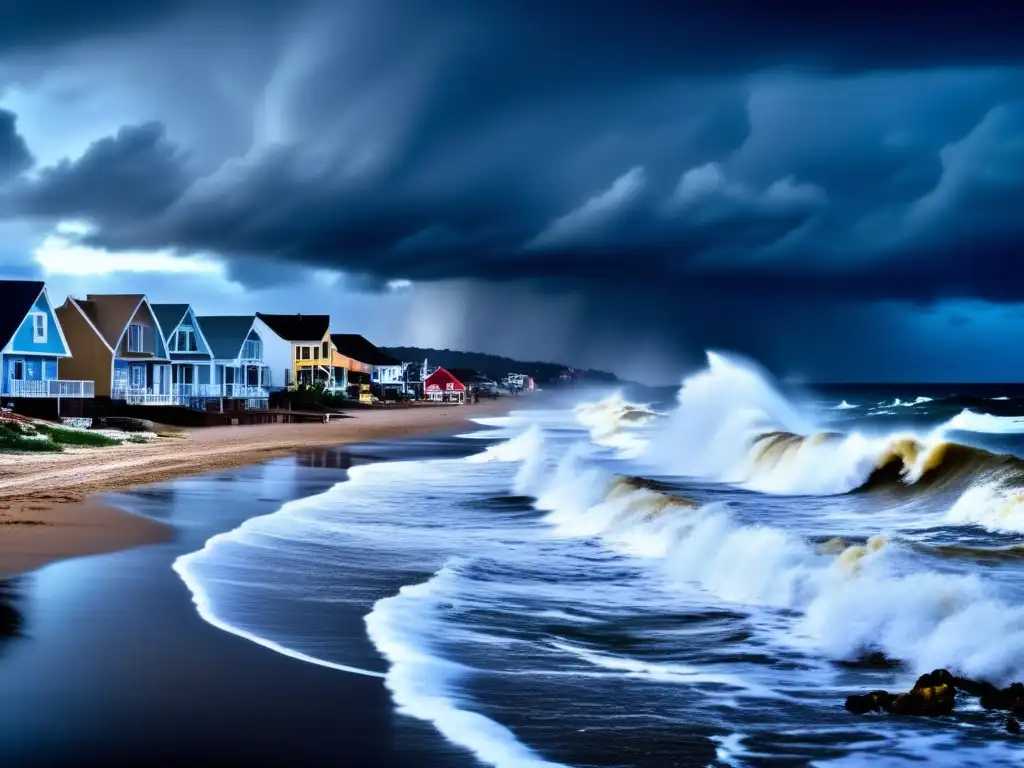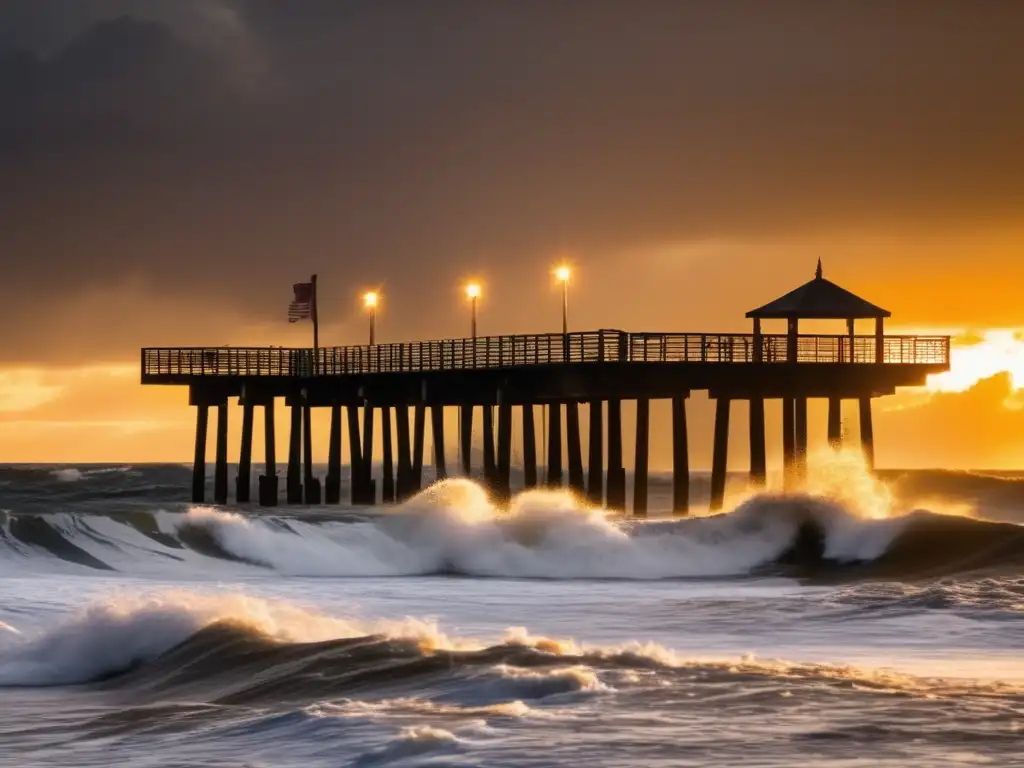When Waters Rise: Understanding And Handling Storm Surges

When Waters Rise: Understanding and Handling Storm Surges
Introduction
Storm surges are one of the most significant threats posed by hurricanes, and they are responsible for much of the damage caused by these storms. In this article, we will explore what a storm surge is, how it forms, and what you can do to protect yourself and your property when facing one.
What is a Storm Surge?

The Basics
A storm surge is an abnormal rise of water generated by a storm, above the predicted astronomical tide. It is caused primarily by the force of the wind pushing water toward the shore, and by the low pressure inside the hurricane that allows the sea level to rise more than usual. In other words, it is essentially a wall of water that is pushed inland as the hurricane makes landfall.
Size And Impact
Storm surges can vary in size depending on various factors such as the intensity and size of the hurricane, the shape of the coastline, and the depth of the ocean floor. They can range from a few feet to over 20 feet in height and can travel several miles inland. Storm surges also have the potential to cause significant damage to infrastructure, homes, and other property, as well as leading to loss of life.
Examples of Devastating Storm Surges
The United States has had its fare share of devastating storm surges in the past. Hurricane Katrina, which made landfall in Louisiana in 2005, brought with it a surge of over 20 feet in some areas. This resulted in catastrophic flooding and widespread damage. Hurricane Sandy, which hit the East Coast in 2012, caused a surge of almost 14 feet in some parts of New Jersey and New York, resulting in billions of dollars of damage.
How Does a Storm Surge Form?

Wind and Pressure
A storm surge forms as a result of two main factors - wind and pressure. As a hurricane approaches the coast, its strong winds start to push water towards the shore, creating a mound of water. Additionally, the low atmospheric pressure created by the hurricane means that the sea level rises even further, adding to the height of the wave.
Shallow Water
Another factor that contributes to the formation of storm surges is shallow water. As a wave moves from deep to shallow water, the bottom of the wave slows down, while the top continues moving at the same speed. This causes the front of the wave to "pile up," leading to an increase in the height of the wave.
Other Factors
The shape and slope of the coastline can also impact the size and strength of a storm surge. Coastal areas that have a gentle slope are more susceptible to storm surges than those with steep cliffs or bluffs. Similarly, narrow bays or inlets can lead to higher storm surge levels than wider areas because the water is forced into a smaller space.
What Can You Do to Protect Yourself and Your Property?

Evacuation
If you are in an area that is under threat from a storm surge, the best course of action is to evacuate. If an evacuation order has been issued, it is important to follow it promptly. Don't wait until the last minute to leave, as roads can quickly become congested and impassable. Remember, your safety is the most important thing.
Protection
If evacuation is not possible or recommended, there are several measures you can take to protect yourself and your property. One of the most effective ways to minimize damage from a storm surge is to build or retrofit your home to be more resistant to surges. This can involve raising the home on stilts or piers, or constructing breakaway walls that can withstand the force of the water.
Emergency Kit
In addition to preparing your home, it is also crucial to have an emergency kit on hand that includes supplies such as food, water, medications, and first aid equipment. Make sure to also include important documents such as insurance policies, identification, and other important papers. Keep these supplies in a safe and easily accessible location.
Frequently Asked Questions

-
What is the difference between a storm surge and a tidal wave?
A tidal wave is caused by the gravitational pull of the moon and sun. A storm surge, on the other hand, is caused by atmospheric pressure changes and wind driven waves associated with hurricanes or other storms.
-
Can a storm surge occur without a hurricane?
While storm surges are most commonly associated with hurricanes, they can also be caused by other types of storms, such as nor'easters or tropical storms.
-
What is the difference between a storm surge and flooding?
Storm surge flooding happens when rising seawater due to a storm piles up on the coast, causing flooding. Flooding can happen for many reasons, including heavy rainfall or the overflow of rivers and lakes.
-
Can you predict the severity of a storm surge?
While it is possible to predict whether a storm surge will occur, it is difficult to predict its exact size or how far inland it will reach. However, meteorologists can provide estimates based on wind speed, storm intensity, and other factors.
-
What should I do if I'm caught in a storm surge?
If you are trapped in a storm surge, try to find high ground and stay there until the water recedes. Do not attempt to swim in floodwaters as they may be contaminated and there may be hidden hazards such as debris or downed power lines.
Conclusion
In conclusion, storm surges are a significant threat posed by hurricanes, and it is essential to understand what they are and how they form. By following evacuation orders and preparing your home and emergency kit, you can minimize the damage caused by these surges. Remember, the most critical thing is your safety, and if you are ever in doubt, do not hesitate to seek help or evacuate.
We hope that this article has provided you with valuable information about storm surges and their impact on coastal areas. Please feel free to share your thoughts and experiences in the comments section below, and if you found this article informative, don't forget to share it on social media!
Additional Resources

- Ready.gov Hurricane Toolkit
- National Hurricane Center's Website
- Federal Emergency Management Agency (FEMA)
 In Transit: Safety In Public Transportation During A Hurricane
In Transit: Safety In Public Transportation During A Hurricane When Communication Breaks: Alternate Communication Methods During A Hurricane
When Communication Breaks: Alternate Communication Methods During A Hurricane Handling House Fires During A Hurricane
Handling House Fires During A HurricaneIf you want to discover more articles similar to When Waters Rise: Understanding And Handling Storm Surges, you can visit the During the hurricane: category.
Leave a Reply

Articulos relacionados: